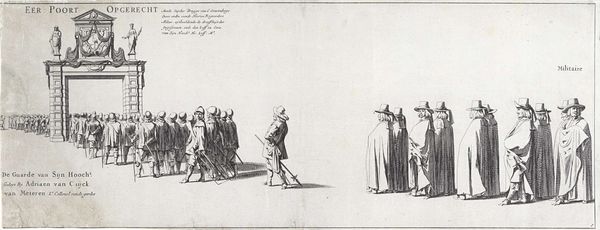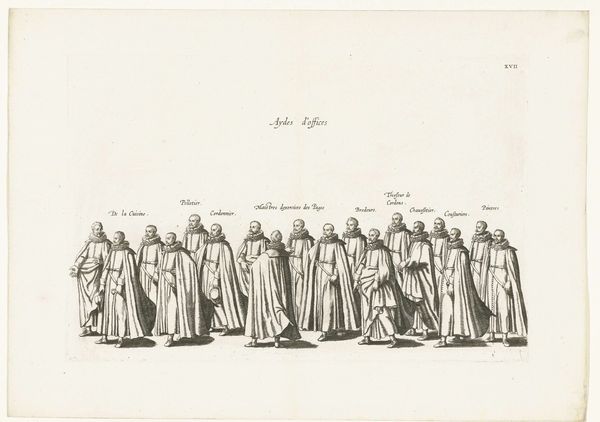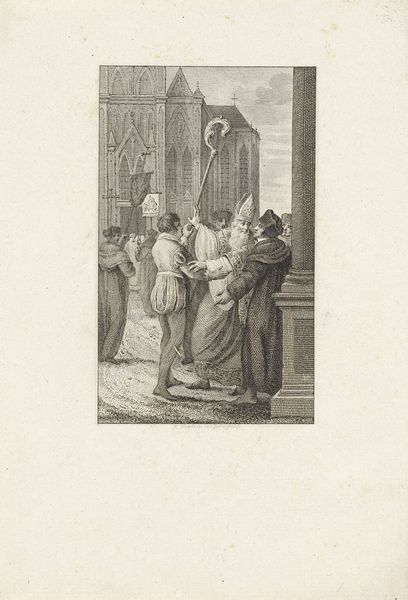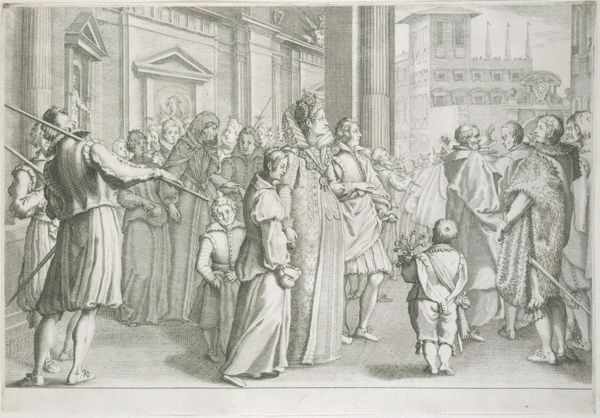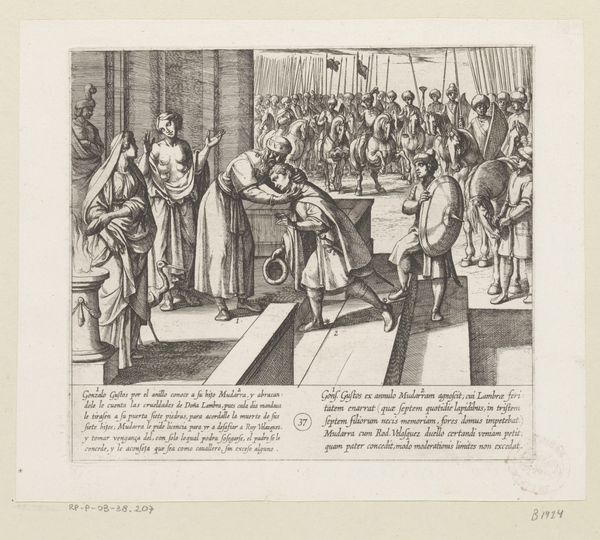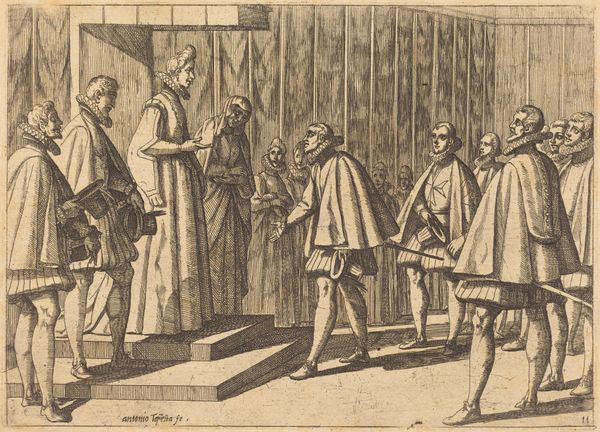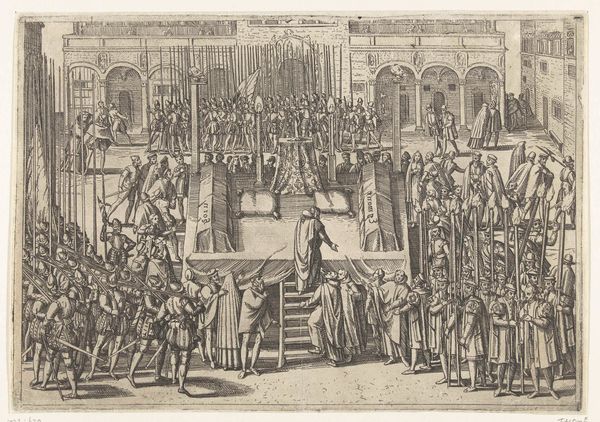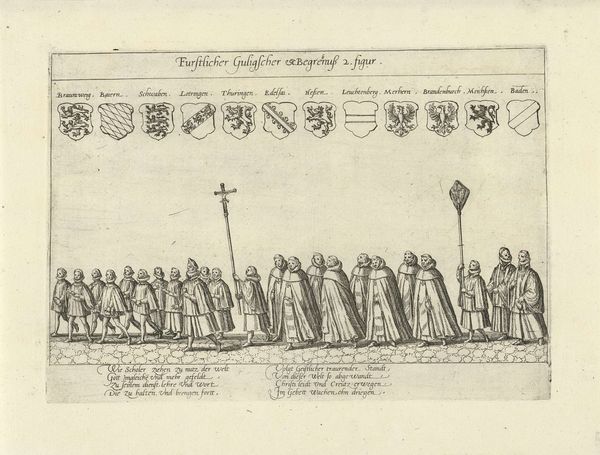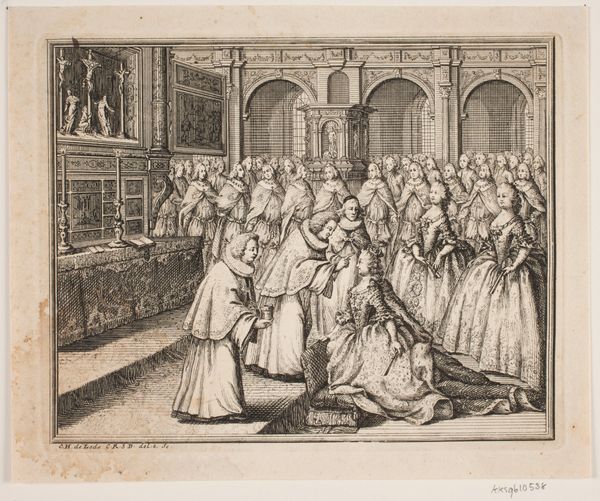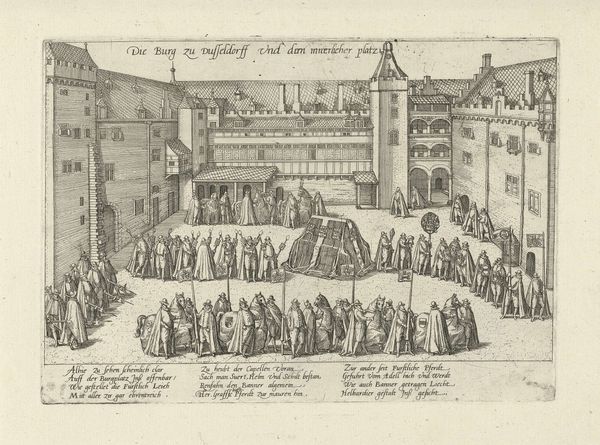
Voorste deel van de begrafenisstoet van Ernst Casimir, graaf van Nassau-Dietz bij de ingang van de Grote Kerk te Leeuwarden (plaat 2), 1633 1634
0:00
0:00
jhermans
Rijksmuseum
drawing, print, engraving
#
drawing
#
aged paper
#
baroque
# print
#
pen sketch
#
sketch book
#
landscape
#
figuration
#
personal sketchbook
#
sketchwork
#
pen-ink sketch
#
pen work
#
sketchbook drawing
#
genre-painting
#
history-painting
#
storyboard and sketchbook work
#
sketchbook art
#
engraving
Dimensions: height 220 mm, width 485 mm
Copyright: Rijks Museum: Open Domain
Curator: So, here we have "Voorste deel van de begrafenisstoet van Ernst Casimir, graaf van Nassau-Dietz bij de ingang van de Grote Kerk te Leeuwarden (plaat 2)," or, the Front Part of the Funeral Procession of Ernst Casimir, Count of Nassau-Dietz at the Entrance of the Grote Kerk in Leeuwarden (plate 2), made in 1634 after a drawing by J. Hermans. This piece is held at the Rijksmuseum. Editor: It has the rigid formality of a royal funeral, but it’s also teeming with human figures. The whole drawing, for me, exudes a stark kind of somberness. The use of line makes it almost feel brittle, like history itself might crumble. What draws your eye when you look at this print? Curator: Ah, the brittle quality, I love that observation. For me, it’s the repetition. Note how the artist renders the figures, these nearly identical cloaked mourners marching in lockstep. It speaks volumes, doesn’t it? A sort of... hive mind of grief. What do you think it meant to create an image like this at the time? To meticulously document this rigid social display? Editor: It's like documenting a stage play. Maybe that's why it feels staged. Preserving power? Just a somber responsibility? Curator: Perhaps. It's easy to focus on the visual record but consider what is omitted too. Were there dissenting voices absent from this formal procession? It makes one ponder on what is seen, unseen, said, and unsaid about public mourning and what it performs. Does the piece feel "historical," do you think? Editor: I guess so! It is kind of frozen in time, isn't it? Thinking about those absences makes me wonder about untold stories and the complexities of memory. Thank you! Curator: Indeed! Looking closely unearths questions rather than simple answers and sometimes reveals far more. A worthy meditation.
Comments
No comments
Be the first to comment and join the conversation on the ultimate creative platform.

